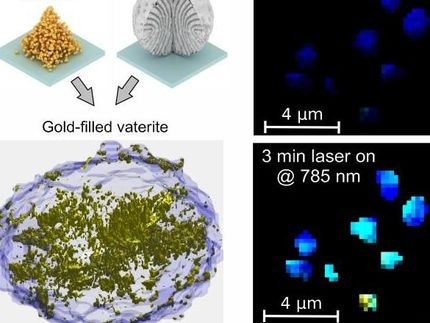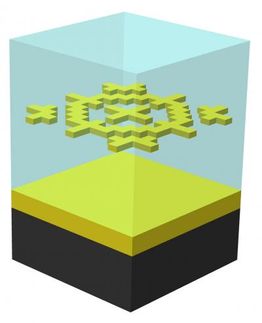New metamaterial can switch from hard to soft - and back again
When a material is made, you typically cannot change whether that material is hard or soft. But a group of University of Michigan researchers have developed a new way to design a "metamaterial" that allows the material to switch between being hard and soft without damaging or altering the material itself.
Metamaterials are man-made materials that get their properties--in this case, whether a material is hard or soft--from the way the material is constructed rather than the material that constructs it. This allows researchers to manipulate a metamaterial's structure in order to make the material exhibit a certain property.
In the group's study the U-M researchers discovered a way to compose a metamaterial that can be easily manipulated to increase the stiffness of its surface by orders of magnitude--the difference between rubber and steel.
Since these properties are "topologically protected," meaning that the material's properties come from its total structure, they're easily maintained even as the material shifts repeatedly between its hard and soft states.
"The novel aspect of this metamaterial is that its surface can change between hard and soft," said Xiaoming Mao, assistant professor of physics. "Usually, it's hard to change the stiffness of a traditional material. It's either hard or soft after the material is made."
For example, a dental filling cannot be changed after the dentist has set the filling without causing stress, either by drilling or grinding, to the original filling. A guitar string cannot be tightened without putting stress on the string itself, according to Mao.
Mao says the way an object comes in contact with the edge of the metamaterial changes the geometry of the material's structure, and therefore how the material responds to stress at the edge. But metamaterial's topological protection allows the inside of the metamaterial remains damage free.
The material could one day be used to build cars or rocket launch systems. In cars, the material could help absorb impacts from a crash.
"When you're driving a car, you want the car to be stiff and to support a load," Mao said. "During a collision, you want components to become softer to absorb the energy from the collision and protect the passenger in the car."
The researchers also suggest the material could be used to make bicycle tires that could self-adjust to ride more easily on soft surfaces such as sand, or to make damage-resistant, reusable rockets.
Original publication
Other news from the department science

Get the chemical industry in your inbox
By submitting this form you agree that LUMITOS AG will send you the newsletter(s) selected above by email. Your data will not be passed on to third parties. Your data will be stored and processed in accordance with our data protection regulations. LUMITOS may contact you by email for the purpose of advertising or market and opinion surveys. You can revoke your consent at any time without giving reasons to LUMITOS AG, Ernst-Augustin-Str. 2, 12489 Berlin, Germany or by e-mail at revoke@lumitos.com with effect for the future. In addition, each email contains a link to unsubscribe from the corresponding newsletter.



























































